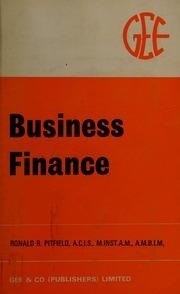The following information are for Question 13-15 McCoy Group's stock price had been lagging its industry averages, so its board of directors brought in a new CEO, Bradon Lee. Lee had brought in Leah Smith, a finance MBA who had been working for a consulting company, to replace the old CFO, and Lee asked Leah to develop the financial planning section of the strategic plan. In her previous job Smith's primary task had been to help clients develop financial forecasts, and that was one reason Lee hired her. Smith began as she always did, by comparing McCoy Group's financial ratios to the industry averages. If any ratio was substandard, she discussed it with the responsible manager to see what could be done to improve the situation. The following data shows McCoy Group's latest financial statements plus some ratios and other data that Smith plans to use in her analysis (Millions of Dollars Except Per Share Data) Balance Sheet, 12/31/2017 Cash Accts. rec. Inventories Total CA Net fixed assets Total assets Income Statement, Year Ending 2017 Selected Other Data 2017 90.0% 10.0% 1.0% 14.0% 20.0% 25.0% 4.0% 40.0% 3.30% 1.67 1.94 $ 20 Sales 280 Op. costs (excl. depr.) 400 | Depreciation $2,000 Op. costs/Sales 1,800 Depr /FA 50 Cash/Sales S 700 EBIT $ 150 Receivables/Sales 40 Inventories/Sales $ 110 Fixed assets/Sales 500 Interest S1.200 Pretax earnings Taxes (40%) 44 Acc. pay. & accr. / Sales S-66 | Tax rate Acets. pay.& accruals $ 80 Net income Line of credit Total CL Long-term debt Total liabilities Common stock Retained earnings Total common equ. S620 Ending stock price Total liab. & equity $1,200 Profit margin (M) S 80 Dividends $20.0 Sales/Assets $46.0 Assets/Equity 500 Add. to RE S 580 Common shares 10.0|Total liability/Total assets $6.60 Return on assets (ROA) S2.00 | Return on equity (ROE) 48.3% 420 EPS 5.5% 10.6% 10.0% 200 DPS $52.80 Target WACC Note: McCoy Group was operating at full capacity in 2017. It has no preferred stocks and short-term investment. 13. Assume that McCoy Group's sale growth rate is 10% from 2017 to 2018, Assume that the firm's 2017 ratios will remain the same in 2017. What is McCoy Group's self-supporting growth rate? How the self-supporting growth rate be affected by an increase in capital intensity ratio? A. 4.3%, lower B. 4.9%, lower C. 5.7%, higher D. 8.2%, higher 14. Use the following new assumptions to answer the questions below: (1) Operating ratios are listed as below. (2) Sales will grow by 10%, 8%, 5%, and 5% for the next four years. (3) The target weighted average cost of capital (WACC) is 10%. The following information are for Question 13-15 McCoy Group's stock price had been lagging its industry averages, so its board of directors brought in a new CEO, Bradon Lee. Lee had brought in Leah Smith, a finance MBA who had been working for a consulting company, to replace the old CFO, and Lee asked Leah to develop the financial planning section of the strategic plan. In her previous job Smith's primary task had been to help clients develop financial forecasts, and that was one reason Lee hired her. Smith began as she always did, by comparing McCoy Group's financial ratios to the industry averages. If any ratio was substandard, she discussed it with the responsible manager to see what could be done to improve the situation. The following data shows McCoy Group's latest financial statements plus some ratios and other data that Smith plans to use in her analysis (Millions of Dollars Except Per Share Data) Balance Sheet, 12/31/2017 Cash Accts. rec. Inventories Total CA Net fixed assets Total assets Income Statement, Year Ending 2017 Selected Other Data 2017 90.0% 10.0% 1.0% 14.0% 20.0% 25.0% 4.0% 40.0% 3.30% 1.67 1.94 $ 20 Sales 280 Op. costs (excl. depr.) 400 | Depreciation $2,000 Op. costs/Sales 1,800 Depr /FA 50 Cash/Sales S 700 EBIT $ 150 Receivables/Sales 40 Inventories/Sales $ 110 Fixed assets/Sales 500 Interest S1.200 Pretax earnings Taxes (40%) 44 Acc. pay. & accr. / Sales S-66 | Tax rate Acets. pay.& accruals $ 80 Net income Line of credit Total CL Long-term debt Total liabilities Common stock Retained earnings Total common equ. S620 Ending stock price Total liab. & equity $1,200 Profit margin (M) S 80 Dividends $20.0 Sales/Assets $46.0 Assets/Equity 500 Add. to RE S 580 Common shares 10.0|Total liability/Total assets $6.60 Return on assets (ROA) S2.00 | Return on equity (ROE) 48.3% 420 EPS 5.5% 10.6% 10.0% 200 DPS $52.80 Target WACC Note: McCoy Group was operating at full capacity in 2017. It has no preferred stocks and short-term investment. 13. Assume that McCoy Group's sale growth rate is 10% from 2017 to 2018, Assume that the firm's 2017 ratios will remain the same in 2017. What is McCoy Group's self-supporting growth rate? How the self-supporting growth rate be affected by an increase in capital intensity ratio? A. 4.3%, lower B. 4.9%, lower C. 5.7%, higher D. 8.2%, higher 14. Use the following new assumptions to answer the questions below: (1) Operating ratios are listed as below. (2) Sales will grow by 10%, 8%, 5%, and 5% for the next four years. (3) The target weighted average cost of capital (WACC) is 10%








